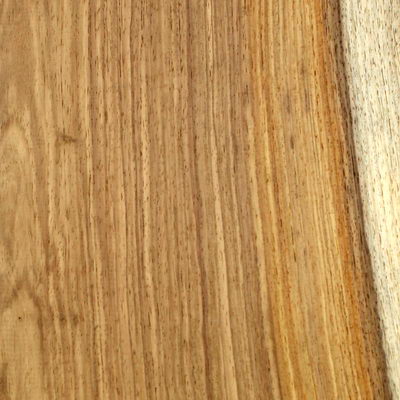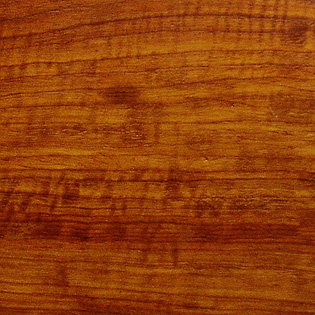 |
 |
 |
|
| Muninga, raw | Muninga, oiled | Padouk species in comparison: left: Padouk, west african right: Muninga, Padouk from East Africa bottom: Salomon Padouk |
more... |
Names and distribution: Botanically Muninga (Pterocarpus angolensis) belongs to the Papilionaceae, a subfamily of Leguminosae. The species is widespread in East Africa. Muninga is related to the gold coloured Pacific Padouk (P. indicus) or the coral Padouk of Central Africa (P. soyauxii). More Padouk species occur in South East Asia: Burma Padouk (P. macrocarpus) and Andaman Padouk (P. dalbergioides).
Appearance: Heartwood walnut colored with reddish or dark stripes; sapwood pale light with a distinct edge. Pores are medium to coarse, scattered and not numerous, variable in size and density. Storage cells in eye shaped fields around the pores and extended to wavy bands in tangential direction. Medullary rays very fine and storied , radial growth zones significantly different. Occasionally interlocked grain and curly structure. Decorative to very decorative.
Properties: Density at 12% moisture content averages 0.63 t/m3 (+ / - 0,56 ... 0,75). The shrinkage is given tangentially and 2.2% radially at 2.8%, both very low values! Muninga shows an exceptionally good staying power. The wood can be easily and free of cracks and dry is to work with all tools without difficulty. It is possible to produce decorative and smooth surfaces. Muninga is weather resistant (class 1-2).
Use: High quality decorative wood interior and exterior, boat building, for shape and dimensional solid frameworks, flooring, furniture, musical instruments, turnery wood, veneers.
Replaces: Teak, north american Walnut
| Reference objects: |
Guitars, Joe Striebel Acoustic Guitar, C. F. Martin, Pennsylvania, USA Alpenhorn, Hubert Hense Mervyn Davis Guitars, South Africa |
| References: |
GOTTWALD 1970: Holzbestimmung der wichtigsten Handelshölzer Wagenführ 1989: Holzatlas |
Note: according to the latest findings, but without any warranty





